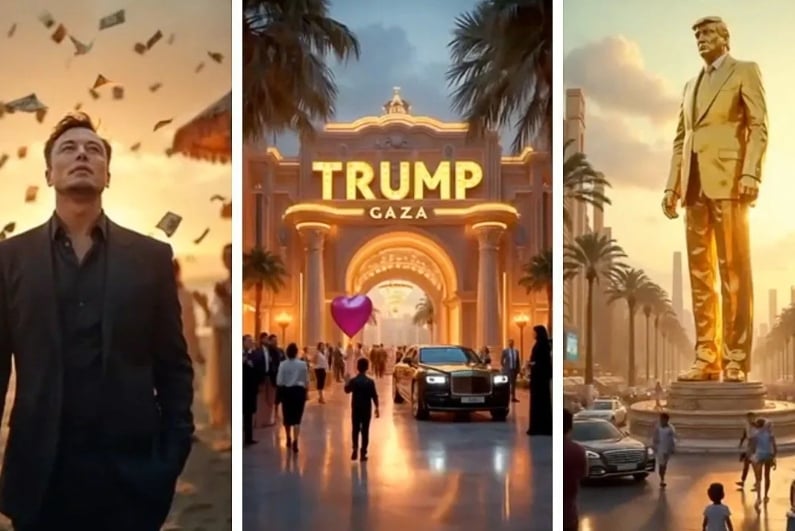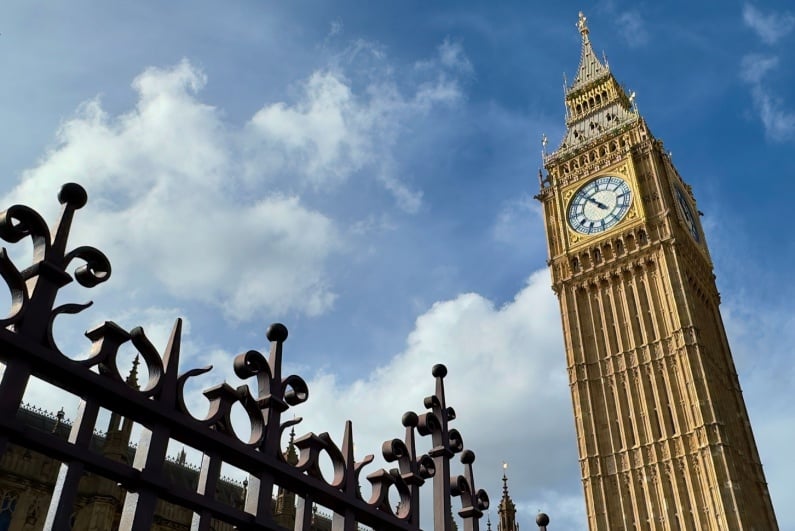Echoes of Atlantic City
Back in the 1980s, up-and-coming business magnate Donald Trump was attempting to sway investors towards his visions for Atlantic City. He described the hotel-casino he was developing as the “Crown Jewel” of the New Jersey city. That casino became known as the Trump Taj Mahal.
Those who have been watching the Palestine situation closely may have noticed echoes of this in Trump’s language around the Gaza Strip. Earlier this year, explaining his plan for the US to take over the Strip and turn it into an upscale resort, he said it would become “one of the greatest and most spectacular developments of its kind on Earth.” He went on to label it:
The Riviera of the Middle East.”
It wasn’t the first time he had mentioned such a plan either. Shortly after his first inauguration in 2017, he described Gaza as “a massive demolition site,” but a “phenomenal location” that he said had “gotta be rebuilt in a different way.” Somewhat unbelievably, he has even shared an AI depiction of “Trump Gaza,” including beach resorts and swanky hotel-casinos:
Trump has now secured a peace deal between Israel and Gaza-based group Hamas. It has been heralded as a great achievement by Trump fans and critics alike, but could it pave the way for Trump to get his hands on the Strip once and for all?
The first phase of peace
The most recent conflict between Israel and Palestine began on October 7, 2023 when Hamas attacked Israel. The group killed at least 1,139 people in that attack, the majority of which were civilians, according to official Israeli records. In response, Israel Prime Minister Benjamin Netenyahu ordered a major bombardment of Gaza, This killed 25,000 people, of which Palestine claim the majority were women and children.
On Monday, Israel and Hamas signed off on the first phase of 20-part peace plan, orchestrated by Trump. The first part of that plan has already been completed, as Hamas returned the 20 remaining living hostages from the October 7 attack, while Israel released 250 prisoners as well as 1,700 other detained Palestinians.
As reported by the BBC, this is just the beginning of the plan. There are multiple other terms that still must be agreed upon. Hamas has so far agreed to return the hostages and to hand over governance of Gaza to Palestinian technocrats, but the group has not mentioned other elements of the plan. Meanwhile, Netenyahu has hinted that Israel could begin military action again if terms are not met.
Paving the way
Whatever the case, there are multiple inclusions in the 20 points that pave the way for Trump to put into place his Gaza Strip plans.
jobs, opportunity, and hope for future Gaza.”
Firstly, part two of the plan stipulates that Gaza will be redeveloped “for the benefit of the people of Gaza.” But this is just the beginning. Part ten builds on this idea much further, stating that a panel of experts will help to birth a “Trump Economic Development Plan” to “rebuild and energize Gaza.” Experts will consider “investment proposals and exciting development ideas” from “well-meaning international groups.” This, claims the plan, will create “jobs, opportunity, and hope for future Gaza.”
While these current deal terms would permit Trump to follow through on his plans to a degree, they wouldn’t allow the US to take ownership of Gaza. Perhaps surprising given that this is something Trump publicly said he would ensure in a joint press conference with Netenyahu in February.
That said, American involvement in the restructuring of Palestine’s government is evident. Point nine of the plan permits Gaza to set up a Palestinian committee to govern temporarily. However, it is to be overseen by a “Board of Peace,” headed and chaired by Trump himself. This board, which will also include former UK PM Tony Blair, will supposedly “handle the funding for the redevelopment of Gaza,” until the Palestinian Authority has completed its “reform programme.” This gives Trump and the US a pivotal role in determining when, and to what degree, control is ceded back to the Palestianians.
Lessons from Atlantic City
Around 40 years ago, it was Atlantic City rather than the Gaza Strip that Trump believed to be the future. He built three casinos in the city. Within just a few years all three were facing bankruptcy and financial ruin, causing a nightmare for Wall Street investor capitalists who had purchased junk bonds on speculation to fund the venture.
His legacy still haunts the boardwalk.”
In the end, Atlantic City reached bankruptcy, requiring a takeover by the State of New Jersey. Photographer Brian Rose arrived in the city in 2016 to see the impact that the Trump Organization’s investments had had. Speaking of Trump, Rose said: “He turned Atlantic City into a ghost town. His legacy still haunts the boardwalk.” His images of the Trump Taj Mahal show it derelict and covered in sand.
Now, Trump has his sights firmly set on the Middle East. While it bears the same hallmarks of that Atlantic City venture, this is a different Trump with far more power and money at his disposal. We will have to wait and see if his plans come to fruition and help the people of Gaza, or whether he leaves the battered region as derelict and barren as the Trump Taj Mahal.




